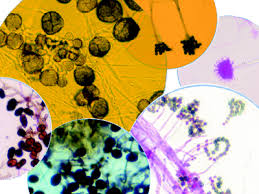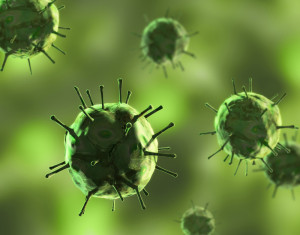Dangers of Toxic Mold
 Mold can be found everywhere in our environment…during all seasons. It will reproduce by developing tiny spores that connot be seen with the naked eye, and can be found in our homes, workplaces, schools and outdoors. While some types of mold are harmless, others are not, and have the ability to pose a number of serious health related issues with debilitating symptoms. The dangers of toxic mold exposure are real, and many individuals are not aware of this silent and invisible treat, and don’t realize their symptoms or illness may be related to toxic mold exposure.
Mold can be found everywhere in our environment…during all seasons. It will reproduce by developing tiny spores that connot be seen with the naked eye, and can be found in our homes, workplaces, schools and outdoors. While some types of mold are harmless, others are not, and have the ability to pose a number of serious health related issues with debilitating symptoms. The dangers of toxic mold exposure are real, and many individuals are not aware of this silent and invisible treat, and don’t realize their symptoms or illness may be related to toxic mold exposure.
Dr. Jack Thrasher, a toxic mold expert, estimated that nearly 40% of all schools and 25% of all homes have mold present in their surroundings. It was later concluded by Dr. Thrasher that the adverse effects of mold exposure on human health is climaxing to a pandemic stage while individuals are often unable to connect the dots and realize the root cause of their illness. Unfortunately, medical professsionals all too often neglect to consider mold exposure as a cause of symptoms, and many people are left unaware that their homes or workplaces are the reason they are falling ill.
When mold spores are in an elevated state within our indoor space (higher than our outdoor environment), they can produce a wide variety of repiratory and allergenic type symptoms such as:
- Act as an Asthma Trigger
- Headache
- Sneezing
- Watery Eyes
- Runny or Stuffy Nose
- Shortness of Breath
- Cough & Postnasal Drip
- Wheezing
- Itchy Eyes, Nose & Throat
The real threat, however, comes from a group of toxigenic molds that have the ability to release something called mycotoxins in our environment. The heavy hitters are known as Stachybotrys (typically referred to as toxic black mold), Chaetomium, and Aspergillus/Penicillium, just to name a few.
 Mycotoxins are toxic, and sometimes carcinogenic, substances produced by molds after they have fully gown. Mycotoxins have the potential of affecting the biological system of the human body by mutating and supressing the immune system. Some have come to be known as being far more toxic to the human system than pesticides or heavy metals, particularly if an individual has some sort of immuno-supression.
Mycotoxins are toxic, and sometimes carcinogenic, substances produced by molds after they have fully gown. Mycotoxins have the potential of affecting the biological system of the human body by mutating and supressing the immune system. Some have come to be known as being far more toxic to the human system than pesticides or heavy metals, particularly if an individual has some sort of immuno-supression.
Mycotoxins, when found within our homes or workplaces, enter our systems via inhalation, ingestion, and can even be absorbed by the skin. When they make their way into our bodies, they can be very powerful and even produce symptoms resembling radiation sickness. Some mycotoxins are also known to be neurotoxic and can impact our CNS (central nervous system) and produce convulsions, behavioural changes and even impair congnitive functioning.
There have been over 200 different mycotoxins idendified from common molds that can be found within our indoor environments. They toxicity is heightened due to their ability to cross directly into our brains from our olfactory neurons. Meaning, anything we inhale or smell, even if there is no odor, can directly enter our brains as there is no barrier. Mycotoxins can cause DNA damage and even interfere with RNA synthesis. It should be noted that toxins from various molds are not produced by the spores themselves, but rather by the mold contaminantion or colony. This makes dead mold spores just as dangerous as the live ones as even molds that are no longer reproducing can still be health impacting due to the these mycotoxins.
In addition to respiratory ailments, toxic mold exposure has also now been linked to many different diseases such as:
- Fibromyalgia
- GERD (gastroesophageal reflux disease)
- Cancer
- Heart Probelms
- Multiple Sclerosis
- Autoimmune Diseases
- Chronic Fatigue Syndrom
- RADS (reactive airway dysfunction syndrome
Regardless of an individuals location, gender, age, status or race, everyone is at a potential health risk from long term exposure to toxic mold, with treatment difficult, extensive and symptoms often present many years after exposure and diagnosis.
It goes without saying that any visible mold within your home or workplace should be address immediately, with special attention being placed on areas prone to mold issues, such as bathrooms and basements. It’s important to know the facts about mold so that you can protect youself, your home, and your family from this ofhen hidden threat. More importantly, look towards the professionals to conduct a thorough mold evaluation with air testing to determine the type of mold present and extent of the contamination before attempting to deal with it on you own. Often, what we see visibly is the tip of the iceburg with the large and more extensive contaminations being hidden within our building envelopes. If professional mold remediation is required, know what to look for when hiring a mold removal contractor.
 Above all, be an advocate for your own health. If you are experiencing symptoms or an illness that may be associated with mold contamination, or have had moisture intrusion, water entry or visible mold in you home or workplace, seek out a doctor who has experience with diagnosing and treating mold exposure illnesses. Make sure to ask for blood testing to determine if mycotoxins have entered your system and are the cause, or a contributing factor to the symptoms you are experiencing.
Above all, be an advocate for your own health. If you are experiencing symptoms or an illness that may be associated with mold contamination, or have had moisture intrusion, water entry or visible mold in you home or workplace, seek out a doctor who has experience with diagnosing and treating mold exposure illnesses. Make sure to ask for blood testing to determine if mycotoxins have entered your system and are the cause, or a contributing factor to the symptoms you are experiencing.
(Visited 1,175 times, 1 visits today)






 Mold can be found everywhere in our environment…during all seasons. It will reproduce by developing tiny spores that connot be seen with the naked eye, and can be found in our homes, workplaces, schools and outdoors. While some types of mold are harmless, others are not, and have the ability to pose a number of serious health related issues with debilitating symptoms. The dangers of toxic mold exposure are real, and many individuals are not aware of this silent and invisible treat, and don’t realize their symptoms or illness may be related to toxic mold exposure.
Mold can be found everywhere in our environment…during all seasons. It will reproduce by developing tiny spores that connot be seen with the naked eye, and can be found in our homes, workplaces, schools and outdoors. While some types of mold are harmless, others are not, and have the ability to pose a number of serious health related issues with debilitating symptoms. The dangers of toxic mold exposure are real, and many individuals are not aware of this silent and invisible treat, and don’t realize their symptoms or illness may be related to toxic mold exposure. Mycotoxins are toxic, and sometimes carcinogenic, substances produced by molds after they have fully gown. Mycotoxins have the potential of affecting the biological system of the human body by mutating and supressing the immune system. Some have come to be known as being far more toxic to the human system than pesticides or heavy metals, particularly if an individual has some sort of immuno-supression.
Mycotoxins are toxic, and sometimes carcinogenic, substances produced by molds after they have fully gown. Mycotoxins have the potential of affecting the biological system of the human body by mutating and supressing the immune system. Some have come to be known as being far more toxic to the human system than pesticides or heavy metals, particularly if an individual has some sort of immuno-supression. Above all, be an advocate for your own health. If you are experiencing symptoms or an illness that may be associated with mold contamination, or have had moisture intrusion, water entry or visible mold in you home or workplace, seek out a doctor who has experience with diagnosing and treating mold exposure illnesses. Make sure to ask for blood testing to determine if mycotoxins have entered your system and are the cause, or a contributing factor to the symptoms you are experiencing.
Above all, be an advocate for your own health. If you are experiencing symptoms or an illness that may be associated with mold contamination, or have had moisture intrusion, water entry or visible mold in you home or workplace, seek out a doctor who has experience with diagnosing and treating mold exposure illnesses. Make sure to ask for blood testing to determine if mycotoxins have entered your system and are the cause, or a contributing factor to the symptoms you are experiencing.